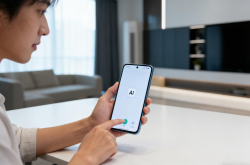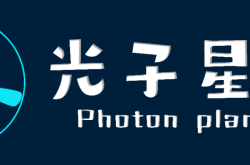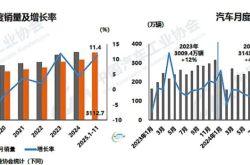Mobile Phone Manufacturers Race to Innovate in the Foldable Screen Era
![]() 07/11 2025
07/11 2025
![]() 707
707
To break the deadlock, manufacturers must shift their focus away from mere specifications and ask a fundamental question: Who truly needs a foldable phone screen? For the majority, the unique value of foldable screens remains unclear. The technology may be ready, but consumer demand has yet to break through the barrier.
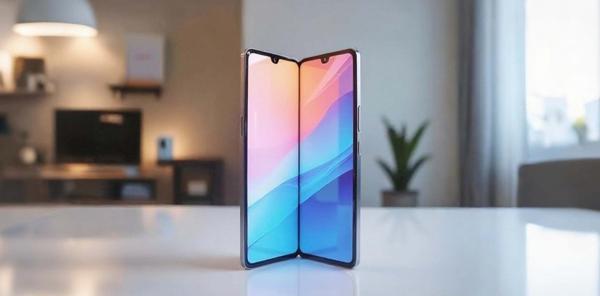
In early July, Honor's latest foldable screen phone, the Magic V5, set a new record with a folded thickness of only 8.8 millimeters, surpassing OPPO's record set earlier this year (the OPPO Find N5 had a thickness of 8.93 millimeters). The Magic V5 became the thinnest foldable screen phone in the world, approaching the thickness of mainstream straight-plate models like the iPhone 16 Pro (8.25 millimeters thick and 199 grams in weight).
Simultaneously, this model ties with vivo's newly released X Fold5 as the world's lightest large foldable, weighing just 217 grams.
Regarding the intense competition in the lightweight and thinness of domestic foldable screens, Jiang Bo, a mobile phone wholesaler in Huaqiang North, noted that winter poses a crucial test for foldable screen phones. Especially in Northeast China, where temperatures often hover around -15°C to -20°C and can drop below -25°C or even -30°C at night, using phones outdoors can make the display extremely brittle and prone to cracking. Some ultra-high-performance phone screens may withstand hammers or even bullets, but they struggle with low temperatures.
Last winter, "Erbin" (a term used to describe the sound of cracking ice) became a trending topic on social media as tourists from other places enjoyed taking photos of the icy world outdoors with their phones. Many foldable screen users encountered immediate issues. As soon as they opened their foldable screens to take pictures, they felt as if they were breaking the crispy outer layer of a sesame seed cake. This is a material science flaw: the lower the temperature, the more brittle the screen, especially foldable screens.
While brands like Samsung and OPPO claim their foldable screens can withstand temperatures as low as -20°C, they also warn users against testing these limits, as "accidents" are common.
Jiang Bo told Lu Jiu Business Review, "When we distributors promote foldable screens, we rarely consider the design highlights or innovative technologies. Instead, we are more concerned about potential issues. Because we need to move volume, if customers are particularly sensitive to some product defects and we haven't made predictions in advance, it may cause the goods to get stuck. Besides avoiding promoting foldable screens in low-temperature areas, we also need to consider the issue of value preservation, i.e., how much your phone is worth after a year of use. It is estimated that the one-year residual value rate of Huawei Mate X5 is less than 60%, and that of Xiaomi Max Fold3 is less than 40%. They are not only inferior to Apple's iPhone but also to Android straight-plate flagship phones of the same period."
In essence, foldable screen phones face a fundamental question: are they worth owning? Xiaomi and other latecomers have realized that winning the foldable screen race involves more than just "making a foldable screen phone better than a regular phone plus an iPad"; it also requires injecting special added value.
Few have seriously considered the basic question: Why were foldable screen phones designed?
A former chief researcher at Samsung in South Korea explained, "About a decade ago, large technology companies (like Samsung) and startups (like Royole Technology) invested heavily to develop the world's lightest and thinnest flexible displays. After some companies succeeded, they suddenly realized that flexible screens also needed a large enough commercial market to recover research and development costs. As a result, foldable screen phones and rollable TVs were quickly invented... As for whether phones need to be folded or TVs need to be rolled, there was no time to think about it."
However, the industry often thinks differently: The main value of technology companies is not to meet existing market demand but to create consumer demand that people haven't thought of yet. For example, no one would have suggested they needed an iPhone before Apple designed it. Instead, Steve Jobs led the design and then found people to manufacture the product, educating the market in the process. Success led to huge commercial returns; failure would have meant bankruptcy.
Foldable screen phones follow a similar pattern: first designed, then used to educate the market. Manufacturers typically attach labels to foldable screens, such as large-screen entertainment devices (more comfortable for binge-watching, reading e-books, and playing games) and mobile productivity tools (more convenient for reviewing PPT files and checking stock K-line charts).
The key to the successful commercial logic of foldable screens lies in continuous upgrades and iterations, where various pain points are addressed and ultimately widely accepted by the mainstream market.
In the early days, foldable screen phones were criticized for obvious creases, vulnerable hinges, and poor software compatibility. But after five years of iteration, foldable screens have shifted from being "concept"-driven to "value"-driven: hinge life has exceeded 300,000 cycles, creases are barely visible, and software compatibility has kept pace.
According to iResearch Consulting data, between 2021 and 2023, the average price of domestic foldable screen products dropped from the 12,000 yuan range to the 8,000 yuan range. By 2025, foldable screen phones in the 6,000 yuan range will be prevalent. This shift is significantly attributed to the large-scale localization of the supply chain (e.g., BOE UTG glass, hinge 3D printing technology to reduce costs).
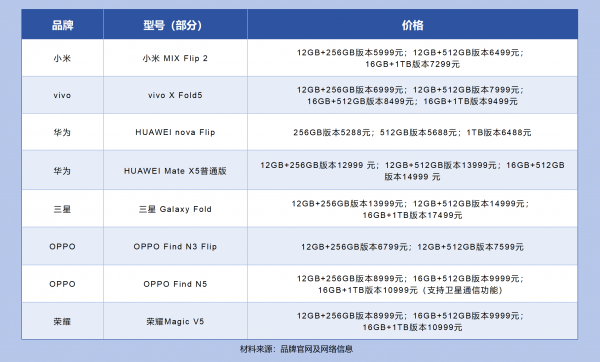
Regarding this, a friend who works in mobile phone hardware R&D at Xiaomi told Lu Jiu Business Review, "For a long time, the R&D approach for foldable screen phones has been based on a 'supply-side' logic, mainly focusing on improving the performance of key materials and components, followed by streamlining the supply chain and reducing the overall phone price. It was assumed that as products became cheaper and better to use, demand would naturally emerge in the market. Only in recent years have 'demand-side' issues truly gained attention, because foldable screens are not a rigid demand. Just because they are cheaper and better to use does not necessarily mean people will buy them."
It can be argued that even if a large number of foldable screen phones appear at the price of one thousand yuan, the future will not be dominated by foldable screens, as many people still find them unnecessary.
Can continuous product performance and cost-effectiveness evolution bring about substantive market changes? It's uncertain. Many obvious problems may not be the focus. To date, foldable screen phones still face three bottlenecks:
First, technological breakthroughs do not equate to demand matching. Large folds are seen as productivity tools (more suitable for business documents and securities analysis), but most users are still accustomed to operating on the external screen. Small folds are marketed as fashionable, but the clamshell design may not be practical.
Second, there is a scene dislocation issue. A Counterpoint survey shows that the average daily unfolding times of foldable screen phone users is only 3.1 times, 76% of consumers have never used the hover function, and the frequency of split-screen operations is even lower than that of traditional tablet devices. Thus, the so-called "one device for two uses" is inferior to the common combination of a 200-gram tablet and an 180-gram phone.
Third, there is a crisis of failed identity labels. As foldable screens fell from the pedestal of ten thousand yuan, they failed to build an ecological moat like the iPhone. After the novelty wears off, users are left with complaints such as "before buying, it's an art piece; after buying, it's just another gadget."
To break the deadlock, manufacturers must shift their focus away from mere specifications and ask a fundamental question: Who truly needs a foldable phone screen? For the majority, the unique value of foldable screens remains unclear. The technology may be ready, but consumer demand has yet to break through the barrier.
Today, foldable screens are no longer flashy but practical, with features like OPPO Find N3's "hover viewing," vivo X Fold5's 6000mAh large battery, and Huawei Mate X5's periscope telephoto lens, proving their practicality on par with straight-plate flagships. However, the industry still widely believes that "the popularization of foldable screens depends on Apple."
Domestic phones boast strong product capabilities, but Apple's brand appeal is formidable—even without foldable screens, iPhone's sales popularity in the high-end market remains unbeaten. Apple users have extremely high loyalty, with the iOS+iCloud+AirPods ecosystem closed loop keeping the retention rate for phone replacements above 90%.
Foldable screens are seen as the final growth point for the mobile phone industry, and Apple users (high spending, high stickiness) are the ideal potential buyers. However, domestic manufacturers have opportunities—Huawei has stabilized its position in the high-end market through business scenarios, and vivo has tapped into the female market with small folds, demonstrating that differentiated competition can still create opportunities.
Huawei: Technological Barriers + Scenario Binding
In the foldable screen race, Huawei has successfully created the brand perception of "foldable screen = high-end business" with hardcore technologies such as triple-folding screens and satellite communications.
More importantly, Huawei can tap into practical business scenarios, such as split-screen office work (document translation and comparison, multi-table data comparison and analysis, or even participating in two meetings simultaneously) and multi-angle hover (video call multi-angle adaptation), making it difficult for high-end users to return to traditional phones.
This precise positioning has yielded significant results. According to CINNO Research data, Huawei dominates 85% of the market share for ten-thousand-yuan foldable screens, truly achieving market dominance through "first mover advantage."
vivo: Redefining User Personas
When other manufacturers were still stacking parameters, vivo took a different approach—early on, the X Flip series successfully leveraged the three female rigid demand functions of "external screen selfie + pet interaction + beauty mirror" to tap into the female market.
In June this year, vivo X Fold5 featured extreme thinness (217 grams), IPX9+ top-tier three-proofing, 6000mAh ultra-long battery life, Zeiss triple camera imaging system, and pioneered support for interconnectivity with Apple devices such as Apple Watch. Its delicate design better meets the needs of female users. This was a smart flanking move and can be considered vivo's moment in the foldable screen era. In the tech circle dominated by men, understanding female needs can also achieve breakthroughs and expand the market.
Is Xiaomi's "Cost-Effectiveness" Still Effective?
Xiaomi MIX Flip 2 wins with its comprehensive strength (such as performance, battery life, crease control, etc.) + cost-effectiveness, which can be considered steady and sure. It is currently unclear what kind of amazing user experience Apple's foldable screen products will bring and whether they can recreate the scenario of the iPad disrupting the industry. However, domestic brands still need to be prepared. When Apple truly enters the market, it may no longer give opportunities for a "second Huawei" to grow.
Yan Ru, who has participated in organizing several sessions of CEE Asia (Beijing International Consumer Electronics Exhibition) and has a deep understanding of the advantages and disadvantages of domestic foldable screen phones, told Lu Jiu Business Review, "Foldable screen phones seem to have not yet reached a consensus on various details, i.e., how to design them best. In the long run, competing in thinness, long battery life, and shallow creases is unsustainable. The era of competing in design may soon arrive. Overall, foldable screens have great innovative potential. Simply put, for example, video subtitles used to only have one screen, with the subtitles floating in the picture area. With foldable screens, this is no longer necessary. For something slightly more complex, foldable screens allow multiple applications to be opened and used simultaneously, with one foldable screen phone potentially equivalent to several laptop computers."
iResearch Consulting predicts that by 2025, one out of every five high-end phones sold in China will be a foldable screen phone. Xiaomi, as a latecomer, must participate in the competition from a higher threshold.
The market is concerned about three questions: First, is Xiaomi too late to enter the market? Second, can Xiaomi's foldable screen phones truly compete? Third, facing Apple's possible entry into the battlefield in 2026, will Xiaomi be too busy with car manufacturing to pay attention? These three points determine how far Xiaomi can go in the foldable screen race.
Are Xiaomi's Foldable Screens Late?
Huawei's first foldable screen phone, the Mate X, was launched in February 2019, while Xiaomi launched its first foldable screen phone, the MIX FOLD, in March 2021, two years later.
Currently, in comparison to Huawei's six-year, seven-generation technological advancement with the Mate X series, Xiaomi's foldable screens have indeed missed the initial market education phase. Nonetheless, Xiaomi cleverly circumvented the early technology trial-and-error stage (allowing Samsung and Huawei to shoulder the costs of hinge technology, screen creases, etc.) and swiftly entered the market once the supply chain matured.
By leveraging its late entrant status to avoid initial technological instability and high R&D costs, Xiaomi confidently priced its 12+512 variant (12GB RAM + 512GB storage) within the mainstream flagship range for straight-plate phones.
Moreover, Xiaomi has always excelled at closely tracking the "Technology Maturity Curve" and transforming cutting-edge technology into mass consumer goods, though it is still experimenting in the foldable screen race. IDC data reveals that Xiaomi's foldable screen market share initially rose but then declined, briefly ranking among the top three domestically but failing to stabilize.
Xiaomi's true advantage lies not in its products or ecosystem, but in its methodology.
With the hardware parameters of various brands' foldable screens gradually converging, what does Xiaomi rely on to breakthrough? Some suggest it could be its ecosystem or cost-effectiveness.
Xiaomi's senior management has repeatedly emphasized a product logic: all great products need iterative improvements to maintain ongoing competitiveness. Xiaomi's first-generation products often receive mixed reviews, leading to the online saying "don't buy Xiaomi's first-generation products." However, relying on innovative design and price advantage as its foundation, Xiaomi consistently bounces back.
In "Xiaomi Ecological Chain Battlefield Notes," the concept of "80% logic" is introduced, suggesting that a new product generation should retain 80% of the original functions (the most practical for mass consumers) while introducing 10%-20% of changes. This approach not only boosts sales but also saves costs.
Xiaomi's foldable screen iterations adhere to the "80% logic." The first-generation MIX Fold received average reviews due to issues like creases and external screen ratio, but it relied on a price below ten thousand yuan and flagship configurations as its foundation.
The following year, the MIX Fold 2 retained the core hinge technology (80%) and focused on optimizing thickness (10%), reducing it to 11.2mm, making it the thinnest horizontal foldable screen at the time. The third generation continued the lightweight theme and upgraded the keel hinge (10% innovation), enabling 45°-135° free hover with its unique three-stage linkage hinge design.
By the time of the MIX Fold 4, while maintaining the reliability of the previous generation's hinge (80%), it introduced bidirectional satellite communication (20% difference). This iterative model ensures the continuity of the basic user experience while creating differentiated selling points through 1-2 key upgrades per generation.
With a strong presence in the mobile phone, home appliance, and automotive sectors, we eagerly anticipate Xiaomi's next foldable screen phone.
As Xiaomi's car production ramps up, concerns arise about potential resource dilution for the mobile phone business.
During the 2025 NPC and CPPCC sessions, Lei Jun revealed that Xiaomi expects to invest 30 billion yuan in research and development in 2025. Different businesses are fostering technological synergy. For instance, advancements in Xiaomi's foldable screens, such as improved high-energy-density batteries, can also enhance the driving range of Xiaomi's electric scooters. Enhanced heat dissipation technology benefits Xiaomi's air conditioners, improving cooling efficiency.
However, potential risks cannot be overlooked. The foldable screen market is exhibiting a trend of "high-end oligopoly": Huawei and Samsung together hold half of the market share, and this brand premium ability is challenging to surpass in the short term. Xiaomi must be cautious of falling into the "mid-range trap" — sacrificing price for market share but failing to break through the 6,000-8,000 yuan price range.
Some institutions predict that over half of the growth in the foldable screen market in 2026 will come from the ten thousand yuan price segment, which is precisely the field that Apple may enter.
Commercial history has repeatedly proven that the popularization of cutting-edge technology often presents two reshuffling opportunities: the first led by technological innovators, and the second dominated by those with economies of scale.
When Apple enters the foldable screen market in 2026, the industry may witness a high-end product-led reshuffling, followed by a mass market shift. Whether Xiaomi can breakthrough depends on its economies of scale and its ability to find a new balance in the strategic synergy between its automotive and mobile phone businesses — after all, supply chain management and ecological integration are crucial for winning in the second half of the consumer electronics industry.


